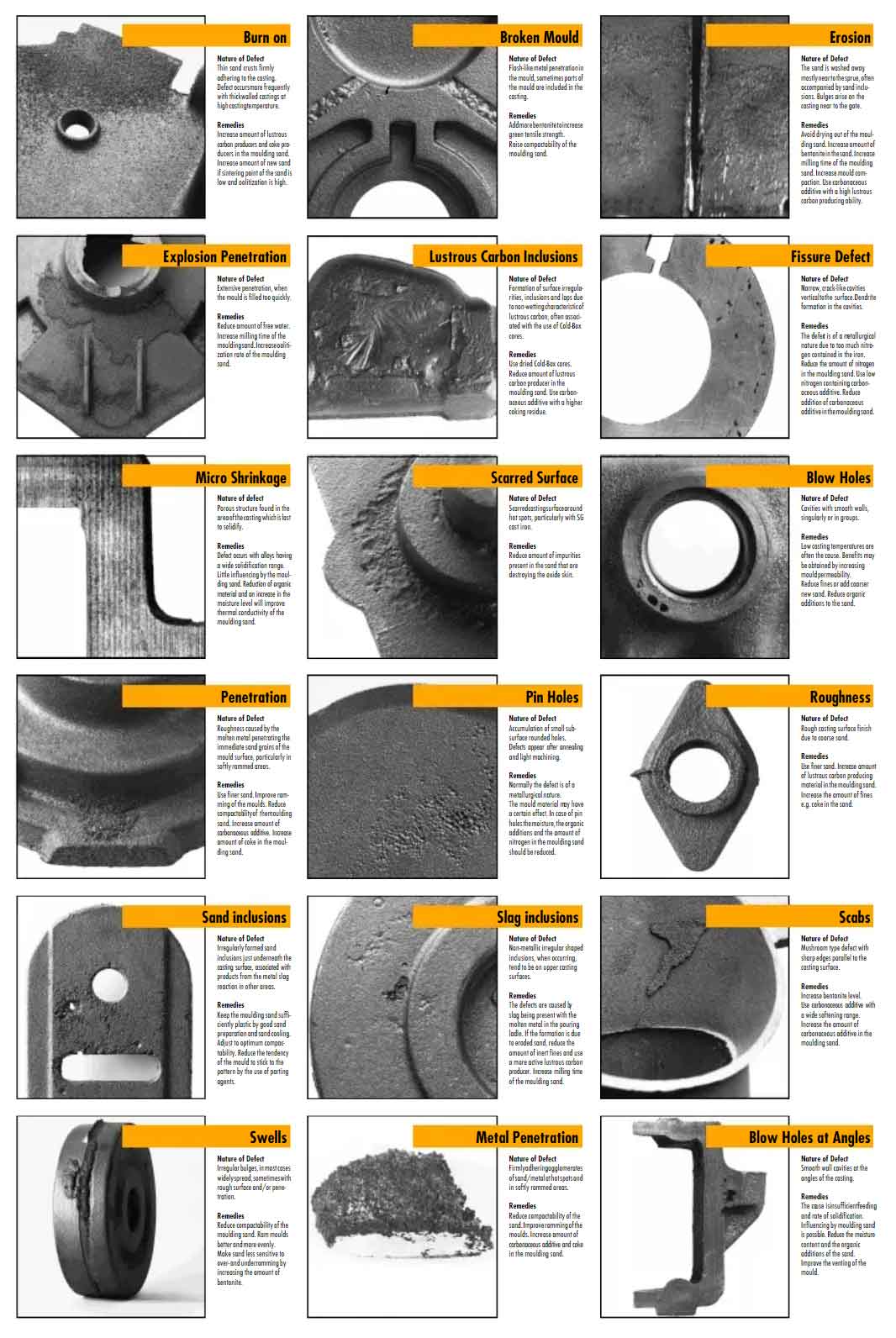Casting defects can have a significant impact on the quality and performance of cast components. Surface finish and dimensional issues are among the common casting defects that require careful analysis and understanding. Let’s delve into these defects and explore some of the possible causes and solutions.

- Surface Finish Defects:
- a. Rough Surface: This defect results in an uneven or textured surface. Possible causes include improper gating or pouring, insufficient mold or core venting, excessive turbulence during pouring, or the use of coarse sand.
- b. Blistering: Blistering causes the formation of bubbles or blisters on the surface of the casting. It can be caused by moisture or volatile substances in the mold, improper mold drying, excessive binder content, or high pouring temperature.
- c. Pinholes: Pinholes are small, shallow cavities on the casting surface. They can be caused by entrapped gases, inadequate mold venting, improper mold coating, or high moisture content in the mold or cores.
- d. Cold Shut: Cold shut occurs when two streams of molten metal do not properly fuse together, resulting in a line or seam on the surface. It can be caused by low pouring temperature, inadequate gating system, or improper mold design.
- Dimensional Issues:
- a. Shrinkage: Shrinkage defects occur when the casting undergoes contraction during solidification, leading to dimensional inaccuracies or voids. It can be caused by inadequate riser design, improper feeding, inadequate cooling rate, or improper alloy composition.
- b. Warpage: Warpage refers to the distortion or bending of the casting. It can be caused by non-uniform cooling rates, improper gating, or inadequate support during solidification.
- c. Oversize/Undersize: Deviations from the desired dimensions can occur due to factors like incorrect pattern dimensions, mold shifting or deformation during pouring, or improper shrinkage allowances.
To address surface finish and dimensional issues, the following steps can be taken:
- Ensuring proper gating and pouring system design to minimize turbulence and ensure smooth metal flow.
- Optimizing mold and core venting to allow for the escape of gases and prevent defects like pinholes.
- Conducting proper mold drying and controlling moisture content to avoid blistering or other moisture-related defects.
- Using appropriate mold coatings or release agents to enhance surface finish.
- Employing effective riser and gating system design to counteract shrinkage and ensure proper feeding of the casting.
- Implementing proper cooling and solidification control to minimize warpage and achieve dimensional accuracy.
- Regular inspection and quality control measures to detect defects early on and implement corrective actions promptly.
It’s important to note that each casting defect is unique, and its causes and solutions can vary depending on the specific casting process, alloy, and design considerations. Close collaboration between casting engineers, foundries, and material experts is crucial to analyze defects, identify root causes, and implement effective solutions for improving surface finish and dimensional accuracy in castings.
